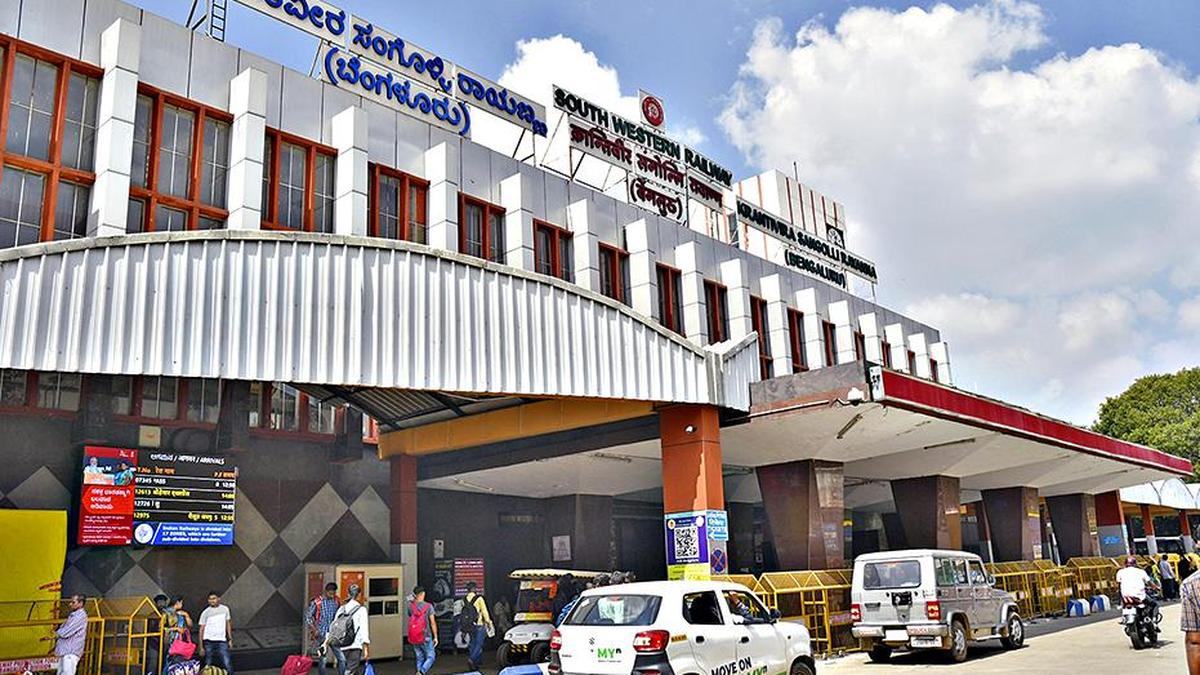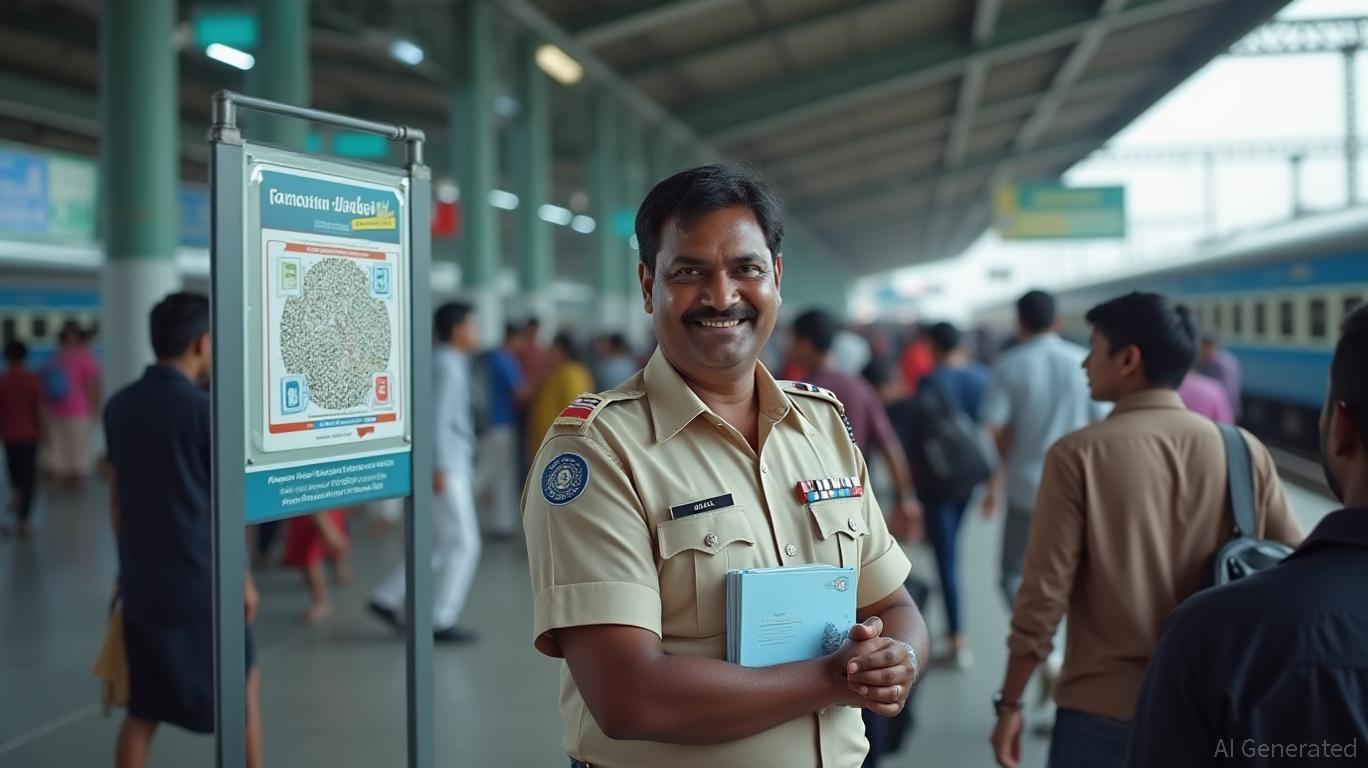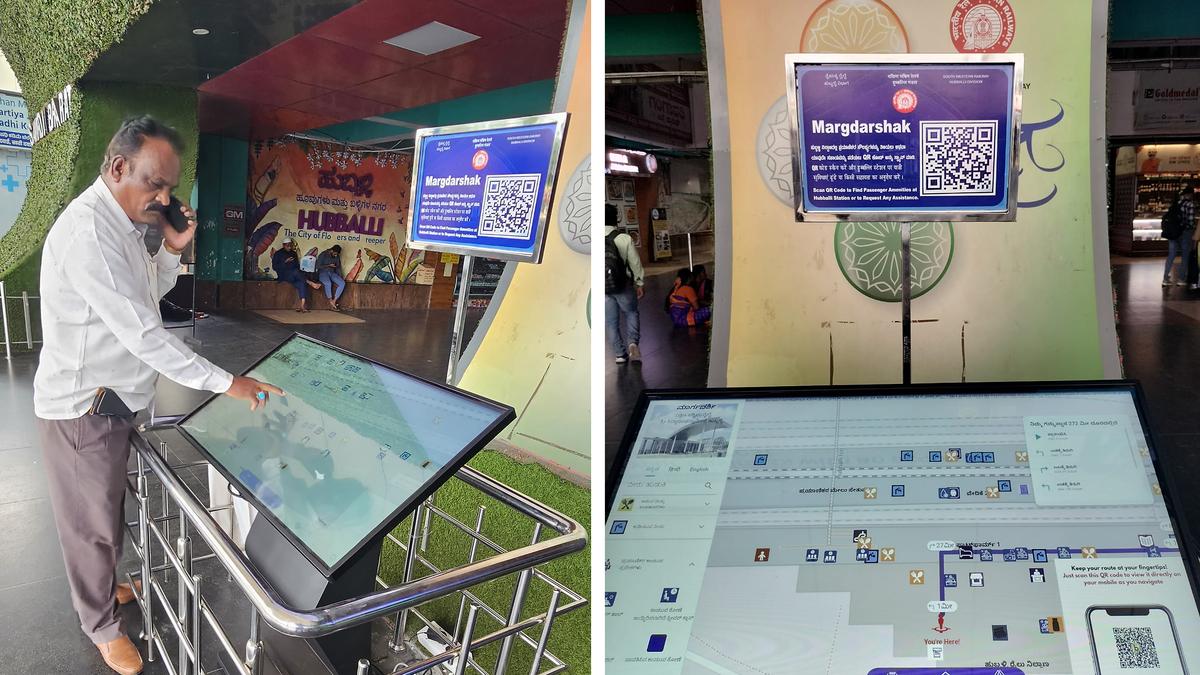In a major step toward digital modernization, the South Western Railway (SWR) has expanded its innovative ‘Namma Nakshe’ digital navigation system to 14 additional railway stations within the Bengaluru Division. The initiative aims to make railway travel more seamless and accessible for passengers by integrating technology-driven station maps, navigation tools, and essential amenity locators. Officials said this digital mapping project represents a milestone in SWR’s ongoing efforts to enhance commuter convenience, improve station management, and create smarter, more connected railway environments that cater to India’s rapidly urbanizing population and growing passenger expectations.
The South Western Railway (SWR) has expanded its innovative digital navigation system, Namma Nakshe, to 14 railway stations across Bengaluru Division, marking a significant leap towards passenger convenience and technological advancement. Designed to help passengers navigate complex station layouts with ease, the expansion comes as part of SWR’s broader digital initiative to enhance user experience and accessibility. The move has been met with widespread appreciation from daily commuters, especially those who rely heavily on local trains and suburban routes across the city.
Digital Leap for Commuter-Friendly Navigation
Namma Nakshe, which translates to “Our Map” in Kannada, allows passengers to digitally view real-time layouts of stations, helping them locate platforms, exits, restrooms, waiting areas, and ticket counters. The initiative, initially launched at major hubs like Krantivira Sangolli Rayanna (KSR) Station and Yeshwanthpur, has now been extended to 14 more stations across the Bengaluru Division, including Baiyappanahalli, Whitefield, Cantonment, and Banaswadi. The feature-rich system has been integrated into the Rail Madad app, enabling easy access via smartphones and touch-screen kiosks installed at stations.
Smart Railways for a Smarter City
According to railway officials, the expansion of Namma Nakshe aligns with Bengaluru’s growing reputation as India’s technology capital. With daily footfalls ranging between 50,000 and 1.5 lakh in major railway stations, the new system is expected to drastically reduce confusion among passengers during rush hours. The project also reflects SWR’s commitment to leveraging technology for better service delivery, particularly for senior citizens and first-time travelers who often find navigating large stations challenging.
Enhancing Passenger Accessibility and Inclusion
The SWR has also ensured that Namma Nakshe is designed with inclusivity in mind. The interface provides multi-language support, including English, Kannada, and Hindi, ensuring accessibility for a diverse group of passengers. Moreover, the digital maps highlight amenities for differently abled individuals such as ramps, accessible restrooms, and tactile flooring. This focus on universal accessibility has drawn praise from passenger associations and civic groups advocating for inclusive public infrastructure.
Subhead: A Step Toward ‘Digital Railways Mission’
The Namma Nakshe initiative is part of the Ministry of Railways’ broader Digital Railways Mission, which aims to use smart technologies to streamline operations and improve commuter experiences nationwide. Bengaluru Division’s proactive adoption of such tools places it at the forefront of innovation within Indian Railways. Officials revealed that future updates would allow real-time crowd tracking and emergency alerts within the app, further empowering passengers to make informed travel decisions.
Public Reception and Commuter Benefits
Passengers have welcomed the expansion with enthusiasm, noting how the digital layout has simplified their navigation through busy terminals. Regular commuters at Yeshwanthpur and Baiyappanahalli reported that the system helped them save time, especially during peak hours. “Earlier, it was confusing to locate platform numbers or waiting halls, but now, the app shows everything clearly,” said a daily traveler. The initiative also helps tourists unfamiliar with the stations, enhancing Bengaluru’s reputation as a global and tech-forward city.
Integration with Other Smart City Systems
In collaboration with the Bengaluru Smart City Project, SWR plans to integrate Namma Nakshe with other urban navigation tools, such as metro maps and BMTC bus route information. This integration will allow commuters to seamlessly plan multi-modal journeys using a single interface. Officials added that discussions are underway to include real-time parking availability and nearby taxi zones in the digital map. If implemented, this could significantly ease the first and last-mile connectivity challenges faced by commuters.
Subhead: Sustainability and Future Plans
Beyond convenience, Namma Nakshe also contributes to sustainability by reducing dependence on printed maps and manual guidance systems. The SWR is now planning to link the platform data with energy usage and crowd density monitoring, optimizing lighting and air circulation systems accordingly. Future plans include AI-based predictive crowd management to prevent bottlenecks during festive seasons and long weekends. The initiative showcases how digital solutions can merge passenger welfare with environmental responsibility.
Boost to Railway Image and Local Economy
Experts believe that the successful implementation of Namma Nakshe will enhance Bengaluru Division’s image as a model for other railway zones. Increased passenger satisfaction can translate into better revenues from tourism and station-based commerce. Vendors operating within the stations also benefit from greater visibility on the digital map, helping travelers discover shops, food stalls, and services they might have otherwise missed. The combined effect is an ecosystem that benefits both passengers and local businesses alike.
A Step Towards the Future of Public Travel
The expansion of Namma Nakshe marks a milestone in SWR’s journey toward modern, technology-driven public transport infrastructure. With 14 stations now digitally mapped, officials aim to cover all major stations under Bengaluru Division by the next fiscal year. The move symbolizes a growing recognition of how digital innovation can transform daily experiences for millions of commuters. As Bengaluru continues to evolve as a global tech hub, Namma Nakshe stands as a testament to how tradition and technology can work together to redefine India’s railway experience.
Digital Expansion for Smarter Stations
‘Namma Nakshe,’ introduced as a pilot project last year, uses interactive digital maps to help passengers navigate railway premises efficiently. Following its success at Bengaluru City and Yesvantpur stations, the system has now been extended to 14 more stations, including KSR Bengaluru, Baiyappanahalli, Cantonment, Yelahanka, and Whitefield. The platform allows users to locate facilities such as ticket counters, restrooms, platforms, waiting rooms, and food stalls through an intuitive digital interface. Officials said that expanding this service marks an important leap toward digitization, making station navigation faster and more accessible to travelers from diverse age groups and backgrounds.
Each digital map is designed to provide real-time updates on train arrivals, departures, and crowd movement within station premises. Passengers can access the system through QR codes displayed prominently across platforms and concourse areas. By scanning the code, users are directed to an interactive web-based map that offers voice-assisted guidance in multiple languages. SWR authorities explained that this feature particularly benefits elderly passengers, tourists, and those unfamiliar with major urban stations. The initiative aligns with the broader vision of Indian Railways to create inclusive, user-friendly, and technologically advanced transport hubs.

Subhead: Bridging Technology and Passenger Convenience
Senior railway officials noted that the project combines data-driven infrastructure management with a people-centric approach. Beyond simplifying navigation, ‘Namma Nakshe’ enables railway authorities to monitor footfall and identify congestion points in real time. This data helps optimize crowd control, maintenance, and security deployment. Authorities said that the digital maps have also been linked with emergency response systems, allowing passengers to instantly locate exits, first-aid counters, and help desks during critical situations. Officials believe that this integration of smart navigation with safety tools will transform how passengers experience travel at Bengaluru’s busiest railway stations.
SWR’s Chief Public Relations Officer emphasized that digital innovation is no longer an option but a necessity for modern transportation networks. By embracing tools like ‘Namma Nakshe,’ the Bengaluru Division aims to redefine passenger engagement through convenience and reliability. Officials stated that such advancements not only improve commuter satisfaction but also streamline daily operations for railway staff. The digital navigation system is expected to reduce dependence on manual assistance and paper signage, ensuring smoother movement during peak hours. Authorities reaffirmed their commitment to gradually extending this system to all stations under the SWR network.
Enhancing Accessibility and Inclusivity
The expansion of ‘Namma Nakshe’ has been widely praised for its accessibility features. The system includes visual icons for hearing-impaired users, text enlargement options for visually challenged passengers, and audio guidance compatible with screen readers. Officials said these inclusivity measures are designed to make railway travel more equitable and comfortable for all. The digital platform is also compatible with mobile devices, ensuring that even passengers with basic smartphones can use the service without downloading an app. SWR officials described this as a critical step toward bridging the digital divide within public transportation infrastructure.
Passenger feedback from the initial rollout has been overwhelmingly positive. Travelers have highlighted how the navigation tool reduced confusion and anxiety, particularly during tight train connections. Parents traveling with children and elderly passengers appreciated the ease of locating restrooms, food counters, and ticket kiosks without having to walk long distances unnecessarily. Station managers reported a noticeable reduction in crowding at information desks since passengers could now access most details through the QR system. Officials confirmed that such digital solutions would play a key role in shaping future passenger services across India’s rapidly evolving railway ecosystem.

Subhead: Bengaluru Division’s Model for the Future
The Bengaluru Division’s proactive approach to adopting digital infrastructure has positioned it as a model for other railway zones across the country. Officials said that the ‘Namma Nakshe’ initiative reflects the city’s broader identity as India’s technology hub. Collaborations with tech startups and mapping experts have enabled SWR to design a user-friendly system capable of scaling across different station layouts. Plans are already underway to integrate additional features such as live train tracking, dynamic platform changes, and digital feedback modules. Authorities believe that these upgrades will make Bengaluru’s railway network a benchmark for smart mobility solutions nationwide.
Railway officials also highlighted environmental benefits associated with digitization. By reducing paper-based signage and printed timetables, the initiative supports Indian Railways’ broader green mission. The use of data analytics derived from ‘Namma Nakshe’ will further enable resource optimization in lighting, waste management, and station maintenance. Officials hope to expand this sustainable model to Tier-2 and Tier-3 stations across Karnataka. SWR management stated that embracing eco-friendly and tech-driven solutions together ensures both operational efficiency and environmental responsibility, reflecting the dual priorities of modernization and sustainability within India’s transport sector.
Public Engagement and Future Expansion
To promote public engagement, SWR has launched awareness campaigns encouraging passengers to use the digital navigation system. Demonstration booths have been set up at major stations where volunteers assist travelers in understanding how to access and utilize the platform. Feedback forms are being distributed to gather user experiences and suggestions for improvement. Officials said that incorporating passenger feedback is central to refining the system’s usability and relevance. Plans include integrating the ‘Namma Nakshe’ maps with ticket booking apps and online platforms to create a unified digital ecosystem for rail passengers.

Railway experts view this initiative as part of a larger digital transformation strategy aimed at improving India’s transport efficiency. By prioritizing technology-enabled services, SWR seeks to make every journey more predictable, comfortable, and transparent. Officials believe that ‘Namma Nakshe’ represents the future of railway travel — one where data, design, and human convenience converge seamlessly. As the project continues to expand, it reinforces Bengaluru’s reputation not only as the nation’s IT capital but also as a pioneer in implementing smart public mobility solutions that serve millions of passengers daily with safety, speed, and clarity.
Follow: Karnataka Government
Also read: Home | Channel 6 Network – Latest News, Breaking Updates: Politics, Business, Tech & More

